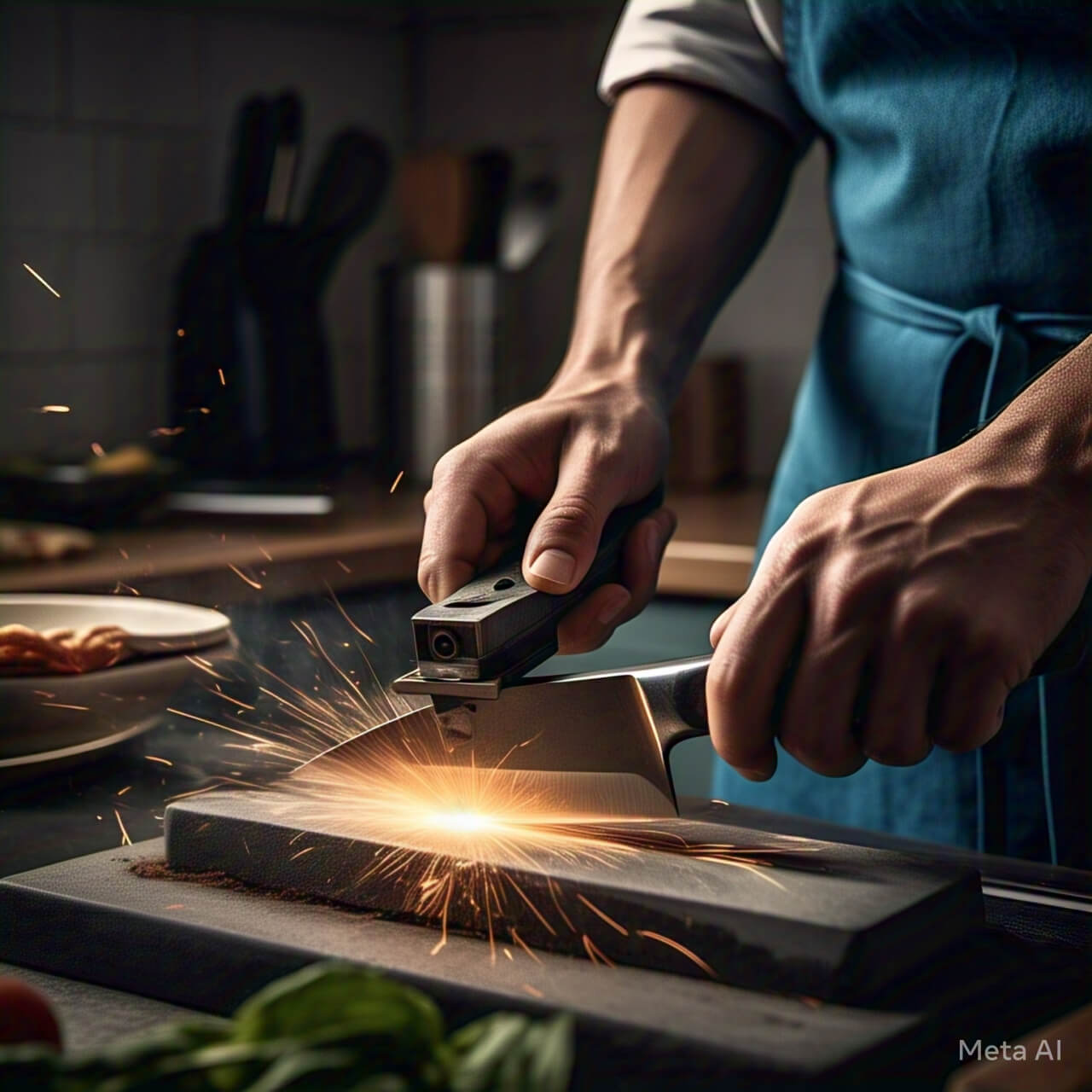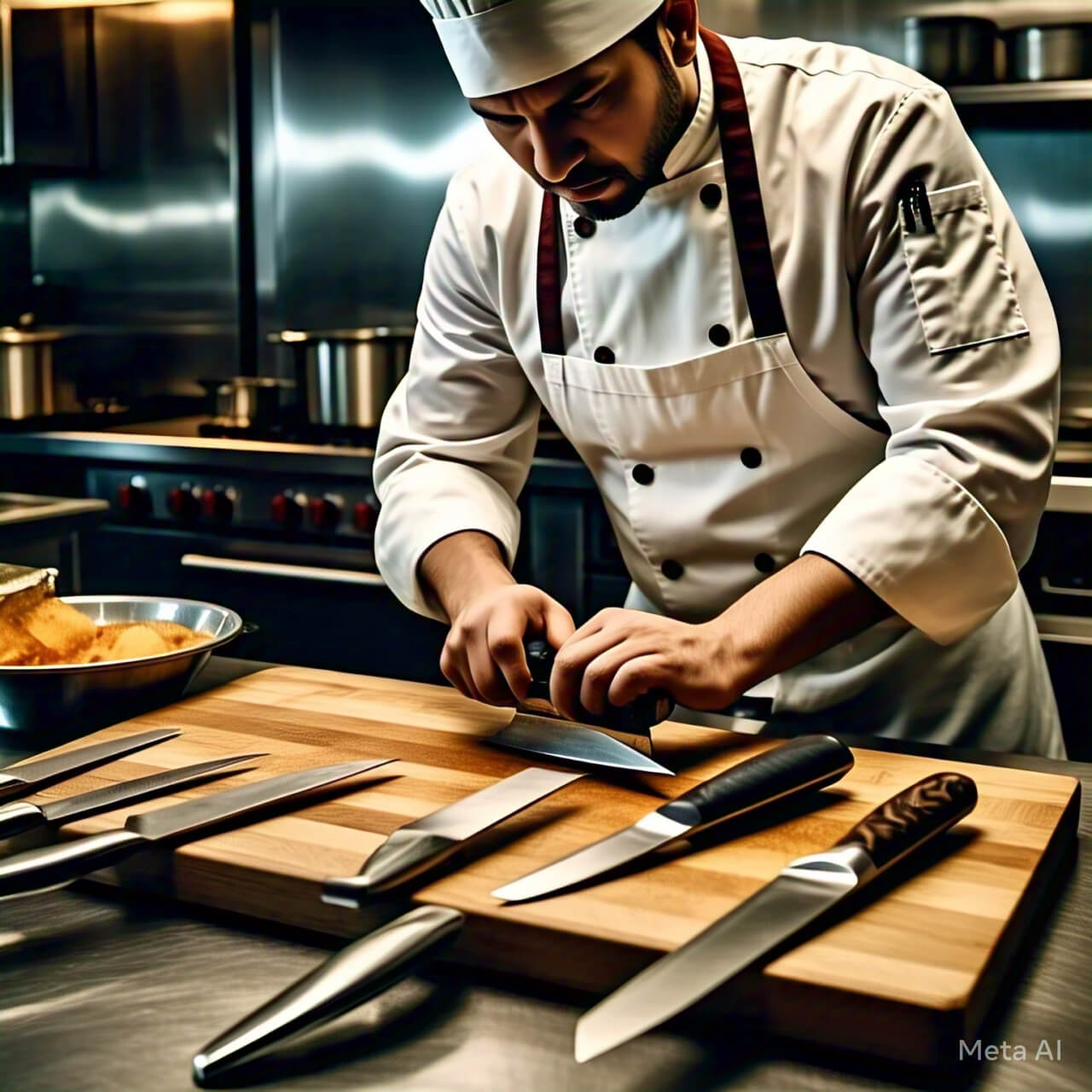How to sharpen kitchen knives properly: Keeping your kitchen knives sharp is important for safe and efficient cooking. A dull knife is more dangerous than a sharp one because it requires extra force, increasing the chance of slipping and causing injury. Sharp knives make cutting easier, faster, and more precise. To sharpen your knives properly, you need the right tools and techniques. The most common sharpening tools are whetstones, honing rods, electric sharpeners, and pull-through sharpeners.
Whetstones are the best for a long-lasting edge, while honing rods help maintain sharpness between sharpening’s. Start by choosing the right sharpening method for your skill level. Always follow the correct angle (usually 15-20 degrees) when sharpening. Test the sharpness by slicing paper or a tomato. With regular maintenance, your knives will stay sharp and last longer.

10 Easy Tips to Sharpen Kitchen Knives Properly
- Use the right sharpening tool.
- Keep a consistent sharpening angle.
- Start with a coarse grit for dull knives.
- Finish with a fine grit for a polished edge.
- Use a honing rod regularly.
- Check sharpness with a paper test.
- Clean knives after sharpening.
- Store knives properly to protect the edge.
- Avoid glass or ceramic cutting boards.
- Sharpen knives every few months.
1. Why Sharp Knives Are Safer
A sharp knife cuts smoothly with less effort, reducing the risk of slipping. Dull knives require more pressure, making them unpredictable. Sharp knives also give cleaner cuts, which is better for food presentation. Keeping knives sharp ensures safer and more efficient cooking.
2. Choosing the Right Sharpening Tool
Different tools work for different needs. Whetstones offer the best edge but require practice. Honing rods realign the blade but don’t sharpen. Electric sharpeners are fast but may remove too much metal. Pick the tool that fits your skill level.
3. How to Use a Whetstone
Soak the stone in water for 10 minutes. Hold the knife at a 20-degree angle. Push the blade forward in smooth strokes. Flip and repeat on the other side. Finish with a finer grit for a polished edge.
4. Using a Honing Rod Correctly
A honing rod straightens the blade but doesn’t sharpen. Hold it vertically and swipe the knife downward at a 20-degree angle. Do this 5-10 times on each side before each use.
5. Testing Knife Sharpness
Try slicing a piece of paper—a sharp knife will cut cleanly. Or cut a tomato; a sharp blade glides through without squashing it. If it struggles, it needs sharpening.
6. How Often to Sharpen Knives
Home cooks should sharpen every 3-6 months. Professional cooks may need monthly sharpening. Use a honing rod weekly to maintain the edge.
7. Common Sharpening Mistakes
Using the wrong angle wears the blade unevenly. Pressing too hard damages the edge. Not cleaning after sharpening leaves metal particles. Avoid these for better results.
8. Storing Knives to Keep Them Sharp
Use a knife block, magnetic strip, or blade guards. Never toss knives in a drawer—it dulls the edge. Proper storage extends sharpness.
9. Best Cutting Boards for Sharp Knives
Wood and plastic boards are gentle on blades. Avoid glass, ceramic, or stone—they dull knives fast. A good board helps maintain sharpness.
10. When to Replace a Knife
If sharpening doesn’t restore the edge, the blade may be too worn. Deep chips or bends mean it’s time for a new knife.

FAQs About Sharpening Kitchen Knives
| Question | Answer |
|---|---|
| How do I know if my knife is dull? | If it crushes food instead of slicing, it’s dull. |
| Can I sharpen a serrated knife? | Yes, use a special serrated knife sharpener. |
| Is a honing rod the same as sharpening? | No, it only straightens the edge, not sharpen. |
| What angle should I sharpen my knife at? | Most knives use 15-20 degrees. Check the manufacturer’s guide. |
| Can I use sandpaper to sharpen a knife? | Yes, but it’s not ideal. Whetstones work better. |
By following these tips, your knives will stay sharp, safe, and ready for any kitchen task!


